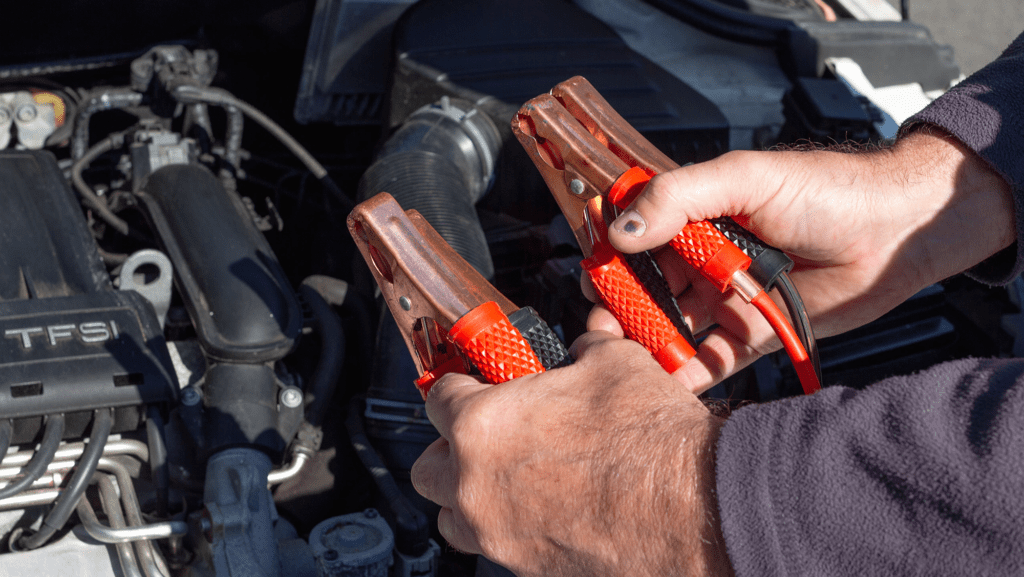A dead car battery can cause significant disruption, leaving you stranded and unable to power up your car. Although employing a battery charger is the ideal solution to revitalize your vehicle’s battery, there could be instances when it’s unavailable or when you require an immediate remedy to get your vehicle running again. In this blog post, we will explore various methods for charging a car battery in the absence of a charger, providing you with alternative solutions when you find yourself in a bind.
Please note that using a battery charger is always the recommended approach for charging a car battery, as these alternative methods may not be as efficient or safe. However, they can prove helpful in emergency situations or when a charger is not available.
In this guide, we will share with you the different charging methods and provide step-by-step instructions and tips to ensure you can safely recharge your car battery and get back on the road.
How to Charge a Car Battery without a Charger
Whether you find yourself in an emergency situation or simply don’t have access to a charger, these alternative methods can help you recharge your car’s battery and get back on the road. While using a battery charger is always the preferred option, knowing these alternative solutions can come in handy when you need them the most.
Jump Starting
Jump starting is a common method used to recharge a dead car battery by using another vehicle’s charged battery. This process involves connecting jumper cables between the two car batteries, allowing the charged battery to transfer energy to the dead one. Once the dead battery receives enough power, the vehicle can be started, and the alternator will continue charging the battery while the car is running.
To jump-start a car, you will need the following items:
- A functioning vehicle with a charged battery
- Jumper cables
- Protective gloves (optional but recommended)
- Safety goggles (optional but recommended)
Step-by-Step Instructions for Jump-Starting a Car
Jump-starting is a common and effective method for recharging a dead car battery by utilizing the power from another vehicle’s charged battery. Knowing how to jump-start a car is a useful skill that can possibly save you time and stress in emergency situations.
Let’s walk through the process together to ensure you are well-equipped and confident in jump-starting your car when needed:
- Park the working vehicle close to the car with the dead battery, ensuring that they’re not touching. Turn off both vehicles and engage their parking brakes.
- Open the hoods of both cars and find where the batteries are located.
- Put on your protective gloves and safety goggles.
- Connect one end of the positive, red-colored jumper cable to the positive terminal (+) of the dead battery.
- Connect the other end of the positive, red-colored jumper cable to the positive terminal (+) of the charged battery.
- Connect one end of the negative, black-colored jumper cable to the negative terminal (-) of the charged battery.
- Connect the other end of the negative (black) jumper cable to an unpainted metal surface on the car with the dead battery, preferably away from the battery and the engine, like a bolt or bracket.
- Start the working vehicle and let it idle for a few minutes to allow the dead battery to charge.
- Try starting the car with the dead battery. If it starts, let both vehicles run for a few more minutes to ensure proper charging.
- Disconnect the jumper cables in the reverse order they were connected, starting with the negative (black) cable on the car that was jump-started.
Safety Tips for Jump-Starting a Car
- Always read your vehicle’s owner’s manual for specific instructions and warnings related to jump-starting.
- Ensure both vehicles are off before connecting the jumper cables.
- Keep the jumper cables and battery terminals free from dirt and corrosion.
- Never connect the negative (black) cable directly to the dead battery’s negative terminal (-), as it may cause sparks or even an explosion.
- Avoid jump-starting a frozen or leaking battery, as this can lead to dangerous situations.
Push Starting
Push starting, also known as bump starting or pop starting, is a technique used to start a car with a dead battery by using the vehicle’s momentum to engage the engine. This method is only applicable to vehicles with a manual transmission and requires assistance from one or more people to push the car.
To push start a car, you will need the following:
- A car with a manual transmission
- At least one helper to push the car (more helpers can make the process easier)
Step-by-Step Instructions for Push Starting a Car
Whether you’re an experienced driver or new to the world of manual cars, knowing how to push start your vehicle can be a valuable skill in emergency situations. Let’s go over the procedure and learn how to push start a car confidently and effectively.
- Make sure the car is on a flat surface or a slight downhill slope, and ensure the path in front of the car is clear.
- Turn off all electrical accessories, such as the radio, air conditioning, and headlights, to reduce the load on the battery.
- Press the clutch pedal fully and put the gear shift into second gear.
- Turn the ignition key to the “on” position but do not attempt to start the engine.
- Release the parking brake and have your helper(s) start pushing the car.
- Once the car reaches a speed of around 5-10 mph (8-16 km/h), quickly release the clutch pedal while simultaneously pressing the gas pedal. This should engage the engine and start the car.
- If the car starts, immediately press the clutch pedal again to avoid stalling and let the engine run for a few minutes to recharge the battery.
Limitations and Potential Issues with Push Starting
- Push starting is only applicable to vehicles with manual transmissions; it cannot be used on cars with automatic transmissions.
- The process may not work if the battery is completely dead, as some electrical power is required to turn on the ignition and engage the fuel pump.
- Push starting can be physically demanding, especially if you have only one helper or if the car is on a flat surface or uphill slope.
- Frequent push-starting can cause wear and tear on the vehicle’s clutch and transmission.
Using the Alternator
The alternator is an essential component of a car’s electrical system that converts mechanical energy into electrical energy while the engine is running. It is responsible for maintaining the charge of the battery and powering the vehicle’s electrical systems. When your car is running, the alternator can be used to recharge a weak or partially discharged battery.
To use the alternator for charging a car battery, you will need:
- A functioning car with a running engine
- Jumper cables or a portable jump starter (if the battery is too weak to start the car)
Step-by-Step Instructions for Using the Alternator to Charge a Car Battery
- If your car battery has enough power to start the engine, simply start your car and let it idle for at least 30 minutes. This will allow the alternator to charge the battery while the engine is running.
- If your car battery is too weak to start the engine, use jumper cables or a portable jump starter to start the car (refer to the “Jump Starting” section above for instructions).
- Once the car is running, remove the jumper cables or portable jump starter.
- Drive the car for at least 30 minutes to an hour, maintaining a steady speed and avoiding frequent stops. This will give the alternator enough time to recharge the battery.
Potential Risks or Drawbacks of Using the Alternator to Charge a Car Battery
Relying solely on the alternator to recharge a deeply discharged battery can put excessive strain on the alternator, potentially shortening its lifespan.
If the battery is severely damaged or has a shorted cell, using the alternator to charge it may not be effective and could even cause further damage to the battery or the electrical system.
Driving with a weak battery can cause the vehicle’s electrical systems to malfunction, affecting the performance and safety of the car.
Although using the alternator to charge a car battery without a charger is a viable method in some cases, it is essential to monitor the battery’s health and replace it if necessary. Regularly maintaining your car’s electrical system and investing in a battery charger or portable jump starter will ensure that you are better prepared for unexpected battery issues.
Revitalize Your Vehicle with HEART Auto Care Battery Services
Bottom Line
We have explored various methods on how to charge a car battery without a charger, including:
- Jump-starting your car using another vehicle
- Push starting your car (only applicable for manual transmission vehicles)
- Using the alternator to charge your car battery while the engine is running
While these methods can prove helpful in emergency situations or when a charger is not available, it is important to remember that using a battery charger is always the best and safest option for maintaining and recharging your car’s battery.
To ensure the longevity of your car battery and avoid potential issues, consider investing in a battery charger or portable jump starter for future use. Regularly check and maintain your vehicle’s electrical system, and replace the battery if necessary.
We hope you found this guide helpful, and we encourage you to share any additional tips or questions you might have in the comments section below. Remember, staying informed and prepared is the key to keeping your car running smoothly and avoiding unexpected battery-related problems.
Discover valuable tips on extending your car battery’s lifespan by checking out our informative blog post at https://heartautocare.com/extend-your-car-battery-lifespan/.






